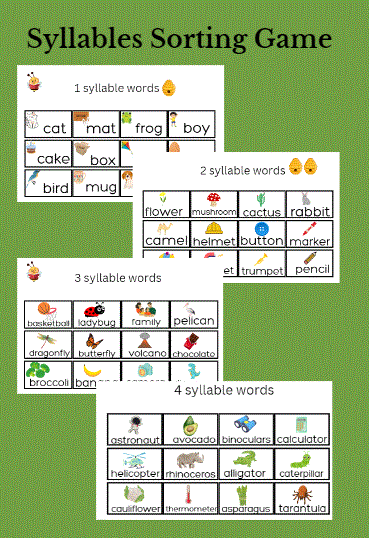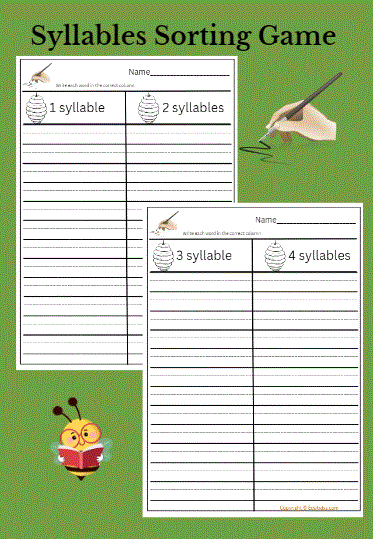Embracing the Magic of Language Through Syllables
Hello, dear fellow educators and enthusiastic learners! Today, we embark on an exciting journey into the world of syllables – those tiny building blocks that make words come alive! As primary and kindergarten teachers, we understand the joy of nurturing young minds and helping them develop strong language skills. Teaching syllables is like uncovering a hidden treasure chest of language magic, and we’re here to guide you through this enchanting adventure.
Check this Backward Decoding technique and get PowerPoint Slides.
Unveiling the Mystery of Syllables
What are Syllables, Anyway?
Syllables are like the puzzle pieces of words. They’re the little beats that create rhythm and melody in our speech. When we say a word, we can actually count the beats – those are the syllables! Take the word “but-ter-fly” – did you hear how it had three beats? That’s because it has three syllables!
Why Should We Teach Syllables?
Teaching syllables is like giving young learners a special pair of glasses that helps them see words in a new way. When children learn to identify syllables, they’re better at sounding out words and reading. It’s like having a secret code to unlock the world of stories and information!
Let’s Get Hands-On: The Syllable Sorting Activity
Alright, get ready for some hands-on fun! We’ve prepared a fantastic activity that will make learning about syllables a blast. It’s called the “Syllable Sorting Activity,” and it’s perfect for our bright students in grades K-2.

What You Need

- A curious bunch of learners
- A set of one, two, three, and four syllable words ( You will find it at the bottom of this post- 12 words for each syllable set)
- A recording sheet for each student (is included for high flyers)

How to Play
- Word Discovery: Start by introducing the concept of syllables. Share some examples and let the students practice clapping out syllables in different words. Remember, it’s all about the beats!
- Syllable Sorting: Now, distribute the set of words among the students. Their task is to sort the words into different categories based on the number of syllables they hear. For example, “cat” goes in the one-syllable category, while “butterfly” finds its place in the three-syllable group – bee hive.
- Recording Adventure: Each student gets a recording sheet. They write down the words under the correct syllable category. This not only helps them practice sorting but also gives them a record of their fantastic word adventure!
- Check this Sex Syllable Types article here. And How to Teach Your Kids Open and Closed Syllables Here.
Unlocking the Magic of Language
As primary and kindergarten teachers, we’re dedicated to creating engaging learning experiences for our students. Teaching syllables isn’t just about sounds and beats – it’s about helping them discover the rhythm of language. Through activities like the Syllable Sorting Activity, we empower our young learners to explore words with confidence and joy.
So, dear teachers and explorers of knowledge, embrace the magic of syllables! Let’s equip our students with the tools they need to decode words, read stories, and express themselves with clarity. And remember, the journey of language is a never-ending adventure, filled with wonder and discovery.
Elevate your teaching methods and empower your students with the Syllable Scoring Activity. Discover more about enhancing language learning at Game.Edukidss
Download your copy here.
Read more:
A Comprehensive Guide to Kindergarten Literacy Development
How to Use the Blend As You Read Decoding Strategy
Digraph sh, ch and th Sentences Worksheets

